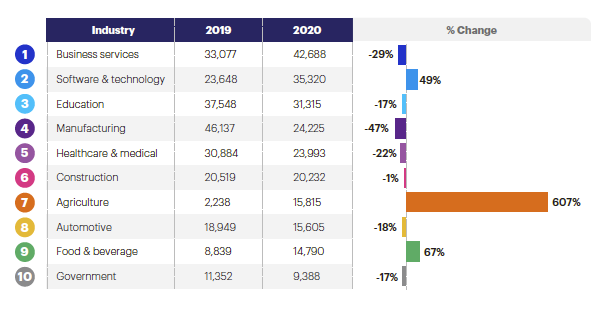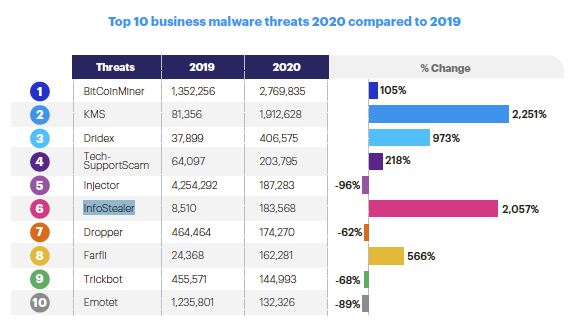Let’s face it. Nearly all of us were glad that 2020 was over. Between all the hardships in the world and a global pandemic, it’s a good feeling that you can start a new year with a new outlook. However, cyber-criminals and hackers are having new outlooks on life as well, and they are focused on malware that can prey on everyday internet users such as you and I.
Every year, MalwareBytes releases their State of Malware Report, which details how malware activity changes from year to year and focuses on key behavior changes in cyber-criminal activity. For 2020, they went a different route for having to factor in the COVID-19 pandemic that as of now we are still enduring.
When the report is revealed we like to take a look at 5 key facts from the report, compare them to the previous year when available, and briefly explain why they are worth focusing on. You can find the full State of Malware 2021 report here.
So, without any further ado, here are 5 Facts from the 2021 State of Malware Report You NEED to Know:
Android Users are a Heavy Target
Report: On Android, HiddenAds, a malware threat that aggressively pushes ads to users—racked up 704,418 detections, an increase of nearly 149% from 2019.
What does this mean?
Due to the nature of Android software, cyber-criminals aiming their attacks at the low-hanging fruit. HiddenAds (or also known as Android/Trojan.HiddenAds) is a malware that injects ads in literally every application possible on your mobile device once installed. Within minutes of having its permissions granted, it can wreak havoc on your device through hijacking your web browser to ad sites, popping up ads in the notifications, and even utilizing fake Facebook Messenger notifications that will lead you to an ad.
All it does is showcase how many applications within the Google Play Store can fall victim to malware attacks such as HiddenAds. The best way to combat this is to research all apps you are considering downloading on your device before installing and DO NOT install any applications from unknown sources.
SpyWare and Monitor App detections Skyrocketed
Report: Monitor App detections rose 565% while Spyware App detections rose by 1055%.
What does this mean?
It really shows what bad actors and hackers are really going after. It doesn’t mean that the problem is decreasing with the decline in monitoring detection, especially with the pandemic continuing on into the year.
Top 10 industry sectors by detections in 2020 compared to 2019.
Report:

(Image courtesy of Malwarebytes)
What does this mean?
Going back to what hackers are aiming for (or in this case who), you can see how the easy targets are in focus. While agriculture may not be an area that you’d think would be a focus for malware attacks, but software and technology certainly should be, considering the rise of working remotely.
KMS and InfoStealer were the biggest rising business malware threats in 2020.
Report:

What does this mean?
KMS is a hack tool that was majorly prominent in 2020. This detection is meant to identify software that allows users to utilize Microsoft software illegally. It could potentially have ties to remote workers using cracked versions of Microsoft applications, like Windows or Microsoft Office. This could be both on the employers and/or the employee side as well.
Ransomware Protection is still not enough.
Report: Three different types of Ransomware are on the alert for their activity in 2020.
What does this mean?
These three ransomware types were covered in the report that are worth learning more about:
- RagnarLocker – This encrypts files on an endpoint that might have some kind of ransomware protection on it. It does this by downloading a Windows XP virtual machine (VM) image, loading it, and use the VM to launch and gain access to files on the host system.
- Maze – Functions similar to RagnarLocker but uses Windows 10 images, which will take up more time and resources to resolve.
- RegretLocker – RegretLocker encrypts archive files that hold the virtual hard disk (VHD) of a virtual machine. So even your virtual drives are not safe from ransomware attacks.
Ransomware attacks are much more sophisticated than ever, so it is incredibly crucial to ensure that your work staff is aware and trained on how to avoid being the target of a malware attack.
neoRhino’s Security Awareness Team, certified IT consultants, and 24/7 helpdesk squad are here to help strengthen your online defenses. You can visit our homepage, see more about The War on CyberSecurity, or give us a call at (281) 779-4850, and we can manage your technology so you can manage your business.



